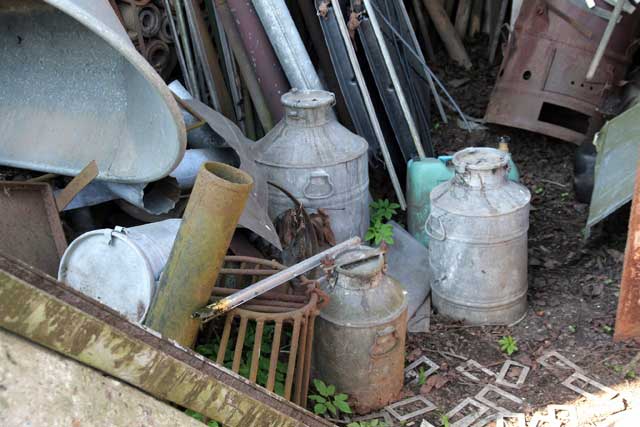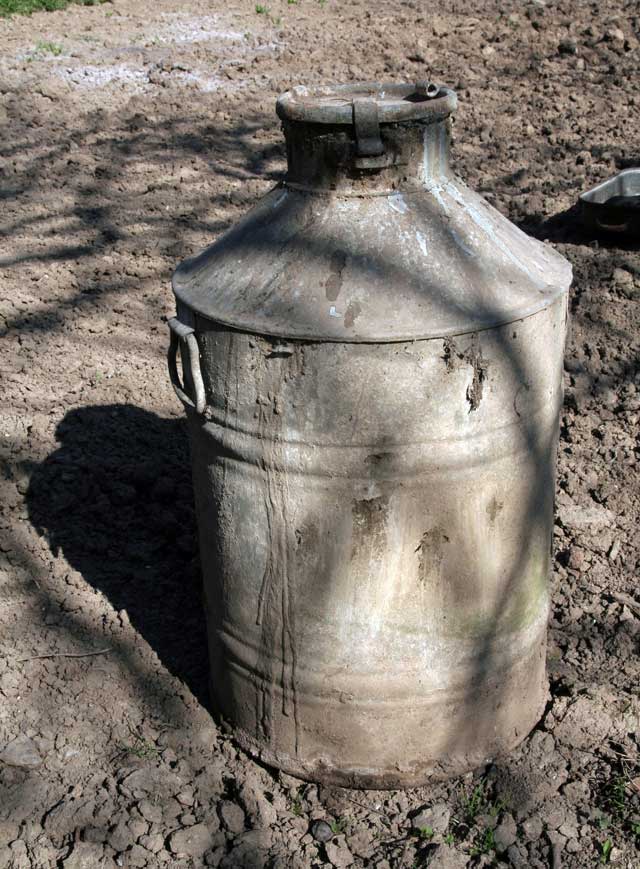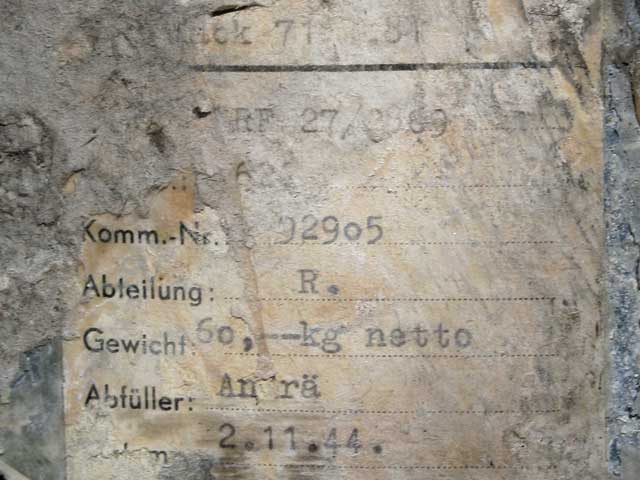Luftwaffe paints- new discoveries
We announced at the very end of our second book Fw 190D Camouflage & Markings , part II , JaPo publishing 2007, that we will include in our third volume a colors chart containing real paint chips found in Czech Republic. Regarding the reactions of readers on several internet forums, we would like to give you precisions on this discovery.

The whole story begun few years ago on a Czech Discussion forum, soon JaPo was in contact with the owner of the paint cans, that where stored in an old warehouse (see photo 1). JaPo, then decided to visit this old man, to check on place what these paint cans look like and to discuss with him.
This man was a boy at war’s end with a strong interest for aircrafts produced close to the farm he was living in Czech Republic and remembered clearly a lot of details on the production and the Russian occupation of Diana’s production Tunnels . One should mention that three tunnels, in Czech Republic were modified to integrate the production of Bf 109G-10/U4, under WNF license. The final assembly of these aircrafts was not done on place, but on a nearby airfield. There was no space enough in the tunnels to fix the wings onto the fuselage, and the main components were sent by road to Kralupy nad Vltavou or Prague-Letnany airfields. There, the final assembly was done and the machines test flown. We recommend you to read the book by Ales Janda and Tomas Poruba Messerschmitt Bf 109G-10/U4, Production & Operational Service, JaPo 2004 for a more detailed study of the production at Diana.

When Russian troops occupied these tunnels , their main interest was turned to machine-tolls and tools (sent back to Russia) , and as the old man remembers that they did not pay attention to the assembled components or to other raw materials and paints used to built Bf 109G-10/U4 that stayed on place . The man remember that Russian did not set up drastic guard measures Thus all persons nearby used to come into the factories and surrounding areas to pick up all what can be useful for them . Wheels fond quickly their way to equip wheelbarrows, aluminum fuselage stiffeners were use for gates, paints for houses or other purposes.
This will, then, explain why, more than sixty years later, cans containing original German paints, made their way to this farm. JaPo agreed to by this can to make color charts using original paints.
There is no doubt that these paints were used by Diana Factory for the Bf 109G-10/U4 produced at the end of the war. Height different paints were identified , each in a metal can (see photo2) : white (RLM ) , yellow , green(RLM25) , silver , light blue (RLM76) , medium grey (RLM75) , dark grey( RLM66 or RLM74) , dark green (RLM83?) . All paints fit with the camouflage scheme observed on Bf 109G-10/U4 and all of them except silver paint were in good state and fully usable color charts.

Unfortunately only two labels applied on the cans were saved (photo 3 ) but damaged , it is clearly visible that at least one paint was in the range 8X as a 8 is visible . The second digit seems to be 1 that would mean that the paint is RLM81 but the color is definitively dark green. So another mystery…
But what is really important is that these paints were preserved and available in enough quantity to produce color charts for enthusiasts with real paints and not remanufactured paints from a war time formula. It will give the real aspect they had at the end of World War II.
You can have information on Japo’s product here together with also discussion forum to ask questions to JaPo member and books authors.
Tomas Poruba & Eric Larger
All images- Tomas Poruba
Article upload by Srecko Bradic







RLM 81 being green is actually not a mystery. As Mr. Michael Ullman found out a few years back, there never was a green RLM 83. Instead it was a dark blue colour intended for the use on naval planes in the Mediterranean as a substitute for RLM 72.
Thus all the dark green and brown colours we see on late war german aircraft are just variations of RLM 81.
That also shows why Focke Wulf, on internal documents, called RLM 81 dark green, Dornier called it olive brown and Messerschmitt called it brown violet.
All the best and keep up the good work
A. Timper